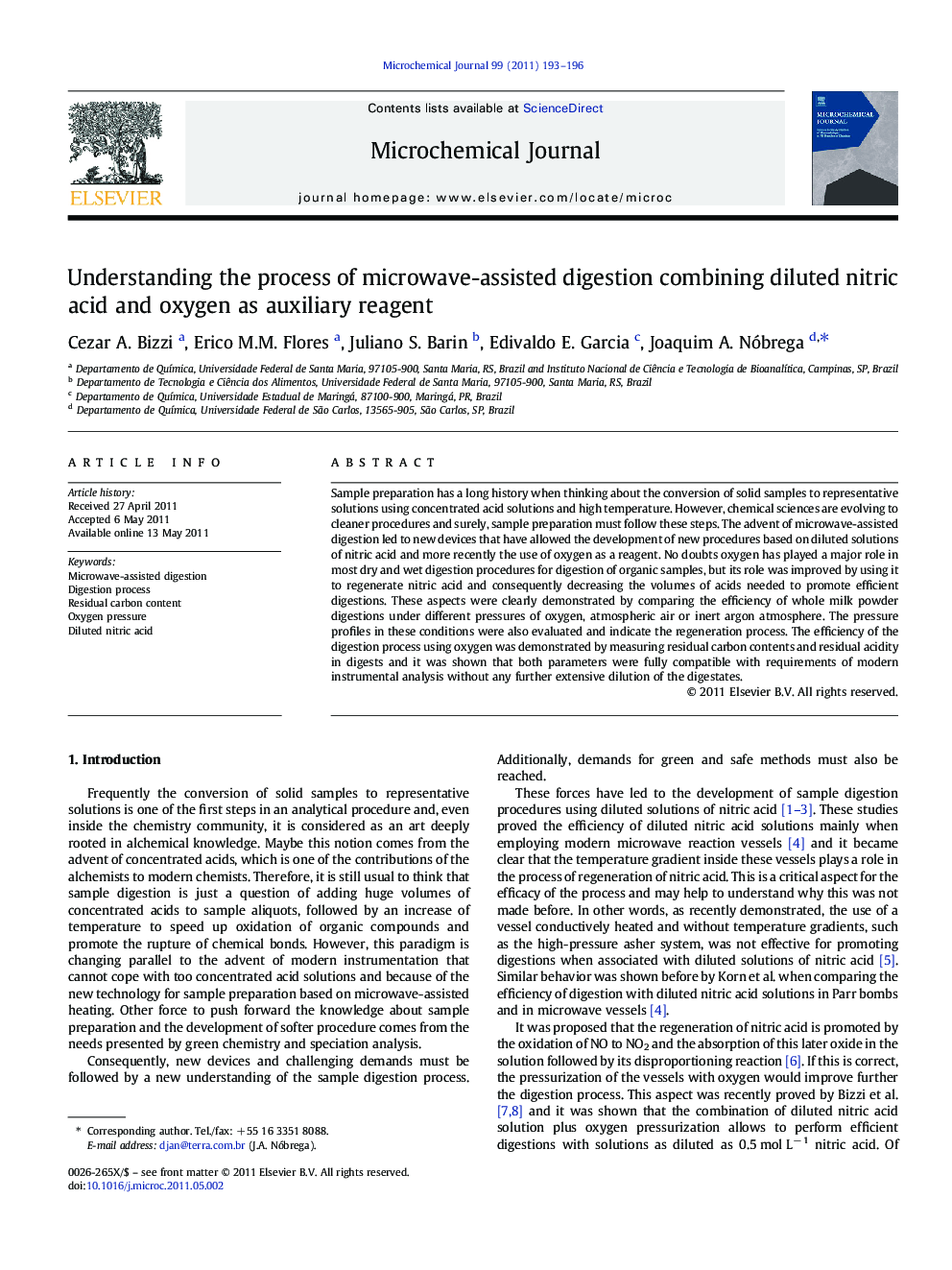| Article ID | Journal | Published Year | Pages | File Type |
|---|---|---|---|---|
| 10556832 | Microchemical Journal | 2011 | 4 Pages |
Abstract
Sample preparation has a long history when thinking about the conversion of solid samples to representative solutions using concentrated acid solutions and high temperature. However, chemical sciences are evolving to cleaner procedures and surely, sample preparation must follow these steps. The advent of microwave-assisted digestion led to new devices that have allowed the development of new procedures based on diluted solutions of nitric acid and more recently the use of oxygen as a reagent. No doubts oxygen has played a major role in most dry and wet digestion procedures for digestion of organic samples, but its role was improved by using it to regenerate nitric acid and consequently decreasing the volumes of acids needed to promote efficient digestions. These aspects were clearly demonstrated by comparing the efficiency of whole milk powder digestions under different pressures of oxygen, atmospheric air or inert argon atmosphere. The pressure profiles in these conditions were also evaluated and indicate the regeneration process. The efficiency of the digestion process using oxygen was demonstrated by measuring residual carbon contents and residual acidity in digests and it was shown that both parameters were fully compatible with requirements of modern instrumental analysis without any further extensive dilution of the digestates.
Keywords
Related Topics
Physical Sciences and Engineering
Chemistry
Analytical Chemistry
Authors
Cezar A. Bizzi, Erico M.M. Flores, Juliano S. Barin, Edivaldo E. Garcia, Joaquim A. Nóbrega,
